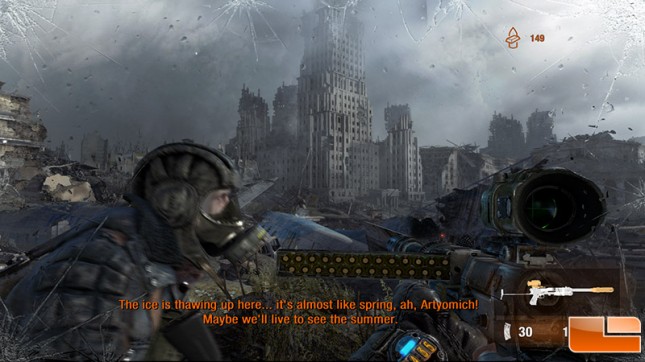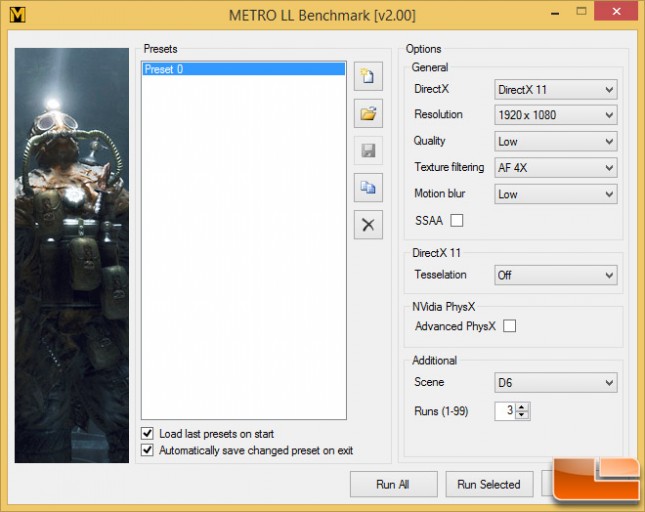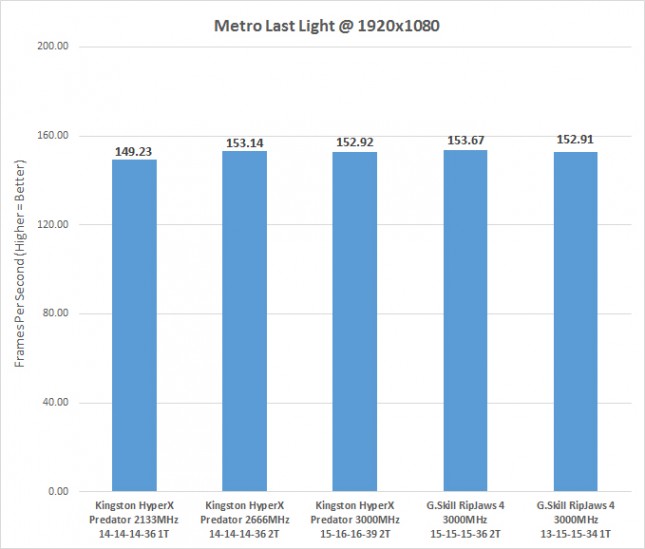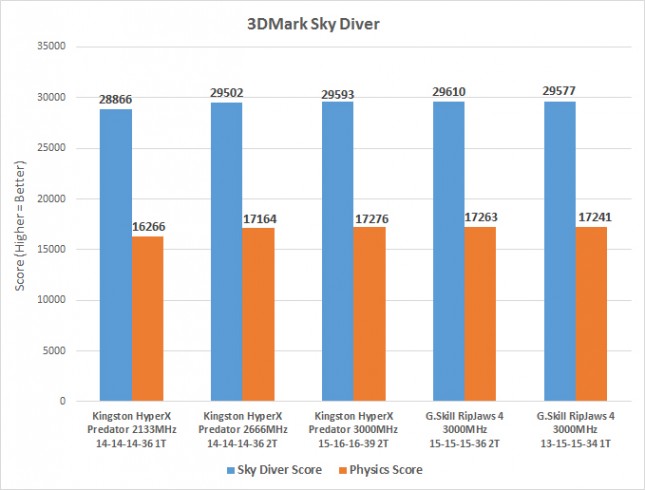G.SKILL Ripjaws 4 16GB DDR4 3000 MHz Memory Kit Review – F4-3000C15Q-16GRR
Metro Last Light and 3DMark Sky Diver
Metro Last Light

Metro: Last Light is a first-person shooter video game developed by Ukrainian studio 4A Games and published by Deep Silver. The game is set in a post-apocalyptic world and features action-oriented gameplay with a combination of survival horror elements. It uses the 4A Game engine and was released in May 2013.

Metro: Last Light was benchmarked at 1920x1080with low image quality settings with the SSAA set to off, Tesselation disabled and and 4x AF. We used the game titles built-in benchmark (seen above) and ran it 3 times at each screen resolution to ensure accurate results.

Benchmark Results: The NVIDIA GeForce GTX 780 Titan video card made short work of Metro: Last Light with these low settings, but we wanted to didn’t want the GPU to be the bottleneck of the system as we were wanting to see if the memory bandwidth was holding the X99 platform back. The G.Skills RipJaws 4 3000MHz CL15 memory kit performed the best and we averaged 153.67 FPS on the benchmark runs versus 149.23 FPS on the reference 2133MHz memory kit. This is a 3% performance gain, which isn’t really significant, but better than a performance loss of any sort. We expected the manually tightened G.Skill kit with CL13 timings and a 1T command rate would pull ahead in the games, but it did not and the scores were very similar.
Futuremark 3DMark Sky Diver

3DMark Sky Driver is the latest test in the worlds most popular benchmark for measuring the 3D graphics performance of gaming PCs. Sky Diver includes a Demo, two Graphics tests, a Physics test and a Combined test. The Graphics tests measure GPU performance, the Physics test measures CPU performance, and the Combined test stresses both GPU and CPU. The Demo does not affect the score.
Graphics test 1 focuses on tessellation and uses a forward lighting method. Graphics test 2 focuses on pixel processing and uses compute shader-based deferred tiled lighting.
The Physics test introduces a new approach that extends the performance range for which the test is relevant. The test runs through four levels of work starting with the lightest and continuing to the heaviest unless the frame rate drops below a minimum threshold. The GPU load is kept as low as possible to ensure that only the CPU is stressed. The test uses the Bullet Open Source Physics Library.
The Combined test contains both graphics workloads and physics simulations to stress the CPU and GPU. The test uses a compute shader-based deferred tiled lighting method.

Results: We spoke with Oliver Baltuch over at Futuremark and he informed us that the new Sky Diver benchmark test in the latest version of 3DMark has the best physics test and that it would be the ideal test to run for our Haswell-E test platform. We found that the overall Sky Diver score along with the Physics and Graphics test scores increased as we went from 2133Mhz to 3000Mhz memory clock speeds. Once we were at 3000MHz though there was very little performance differences between the Kingston and G.Skill DDR4 memory kits. We were hoping for better performance with the manually tightened kit, but the scores actually slightly decreased. So, to run the kit at 1.5V instead of 1.35V to get CL13-15-15-34 1T timings versus CL15-15-15-36 2T timings might not be worth it in the long run as you are giving the kit 11% more power and in many cases you aren’t getting a substantial performance increase.
